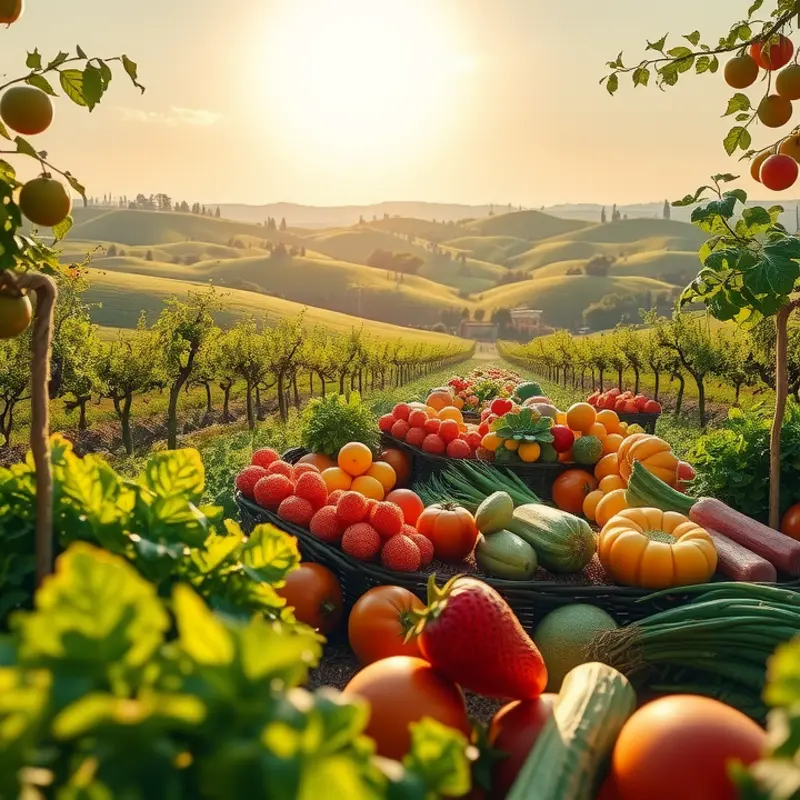Herbs are more than mere garnishes; they are the soul of many culinary traditions worldwide. From the aromatic basils of Italy to the fragrant cilantro of Mexico, these greens infuse dishes with character and depth. Delving into the rich tapestry of global cuisines reveals how different cultures harness the unique flavors of herbs, elevating their cooking in ways that surprise and delight. Embark on a flavorful exploration that will inspire your kitchen adventures and expand your culinary repertoire.
The Flavorful Foundations: Herbs in Global Cuisines

The vibrant world of global cuisines is richly painted with the use of herbs, each culture utilizing these botanical wonders uniquely. Herbs provide not only flavor but also serve as a reflection of the area’s climate, agricultural practices, and cultural beliefs. Let’s delve into some classic examples that showcase the integral role of herbs in defining the essence of various regional dishes.
In the Mediterranean, rosemary and oregano reign supreme. In Greek cuisine, oregano is indispensable, infusing dishes like moussaka and lamb roasts with its pungent aroma. The warm, dry climate of the Mediterranean supports the growth of these hardy herbs, which thrive with minimal water.
Across Asia, particularly in Thailand, the vibrant use of lemongrass and Thai basil adds quintessential flavors to dishes like tom yum soup. Lemongrass, with its citrusy notes, complements the humid tropical climate perfectly, while Thai basil offers a sweet, anise-like flavor that is both bold and refreshing.
In India, cilantro (or coriander leaves) is a staple in a myriad of dishes, from chutneys to richly spiced curries. The herb’s bright and citrusy notes balance India’s bold spice blends. Moreover, many Indian households engage in small-scale herb gardening, a practice intertwined with traditional Indian agronomy and culinary traditions.
Turning to the Middle East, mint is frequently found in recipes like tabbouleh, where it pairs with parsley and bulgur to create a refreshing harmony of flavors. Mint’s cooling properties are cherished in the region’s hot climate, and its invigorating aroma is an essential part of many beverages and desserts.
Mexican cuisine often employs epazote, a herb lesser known outside the region but crucial to authentic Mexican cooking. It adds a unique, almost medicinal flavor to dishes like black bean soup, helping to reduce the legume’s gaseous effects. This herb mirrors the indigenous heritage and local agricultural practices of Mexico.
In the Caribbean, culantro is widely used, distinct from but related to cilantro, offering a deeper, more robust flavor. Culantro is vital in dishes such as sancocho, where it infuses the stew with its distinctive aroma. The region’s tropical climate facilitates the growth of this herb, which thrives under such conditions.
Each of these herbs, whether familiar or exotic, holds a story of cultural exchange and adaptation. Their presence in traditional recipes illustrates not only the culinary decisions but also the environmental influences and historical trade routes that shaped regional palates over centuries. For more on how culinary practices and trade influences have shaped global cuisine, consider visiting our detailed overview of culinary influences from trade.
Herbs continue to be the flavorful foundations upon which diverse cultures build their culinary identities, connecting taste with tradition, environment, and history.
Herbs as Cultural Markers: Stories of Tradition and Identity

Herbs serve as vivid cultural markers, imbued with stories that echo through time. Across the globe, different societies have intertwined these green wonders into the fabric of their identities. The complex relationship between culinary practices and cultural traditions often finds its expression in the use of herbs.
In Native American tribes, sage is not only a key ingredient in cooking but also an essential part of spiritual practices. This herb is known for its purifying properties, symbolically cleansing spaces during ceremonies and gatherings. The ritualistic use of sage underscores its perceived power, where its smoke is believed to ward off negative energies. These practices have transcended generations, manifesting in both culinary and ceremonial contexts.
Dill holds a unique place in Eastern European cuisines. Beyond its culinary use in dishes like pickles and borscht, dill is celebrated for its historical significance. The herb symbolizes wealth and prosperity, often included in dishes served at family gatherings and special events. Dill’s fresh, tangy flavor enhances not just dishes but also the deeply rooted cultural narratives that accompany them.
In the Middle East, herbs such as za’atar are vital in defining regional flavors. This blend, typically made from thyme, sumac, and sesame seeds, transforms simple meals into feasts rich with history. Za’atar’s prominence is a testament to how herbs bridge memory and identity, ensuring that culinary traditions remain vibrant and flavorful. Family recipes pass through generations, each pinch of za’atar a continuation of shared heritage.
The ritualistic role of herbs extends into medicine. Throughout history, herbs have been used not only for flavor but also for their healing properties. For instance, turmeric in Indian culture is lauded for its anti-inflammatory benefits. Its golden hue pervades cuisine, medicine, and even spiritual rituals, exemplifying the multifaceted role herbs play beyond the plate.
Community gatherings often spotlight the role herbs play in collective identity. In Greece, oregano fuels communal barbecues, where families come together to embrace their shared heritage. Oregano’s bold flavor is as much a reason for gathering as the culinary rituals it brings forth. These traditions foster connections, making meals a conduit for cultural continuity.
These time-honored practices teach us about the emotional and historical heft herbs carry around the world. By embracing the stories herbs tell, we deepen our understanding of cultural tapestries. Each use case, whether spiritual or medicinal, transforms herbs from mere ingredients to vessels of tradition. For a closer look at how diverse culinary influences meld with cultural practices, check out culinary influences through trade.
Final words
Herbs serve as both flavor enhancers and cultural symbols, weaving together the culinary narratives of diverse peoples. As you experiment with these vibrant greens in your cooking, remember that each herb carries a story, connected to the land, tradition, and shared experiences in the kitchen. Embrace the power of herbs not just to taste but to understand and appreciate the intricate tapestry of global culinary practices, fostering a deeper connection to the food we eat and those who share it with us. Every dish is an invitation to explore a world of flavors and traditions, waiting to be discovered with a sprinkle of fresh herbs.








